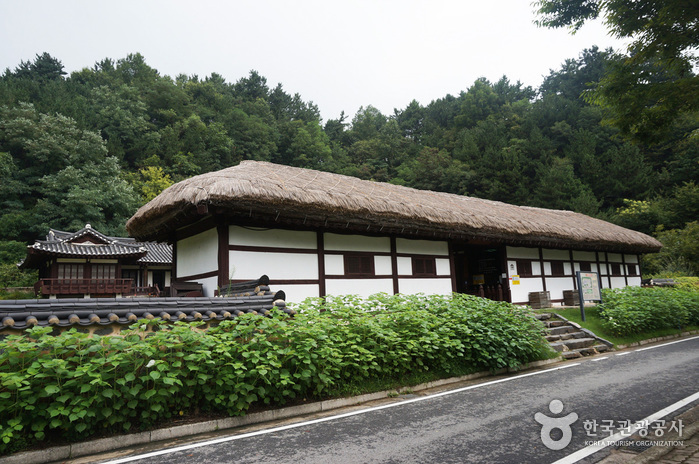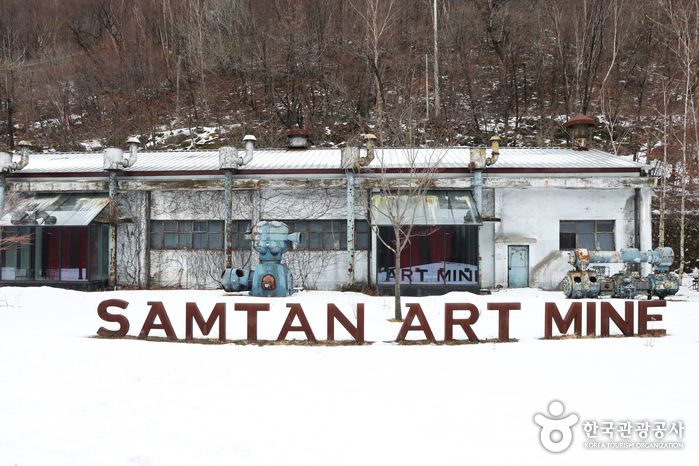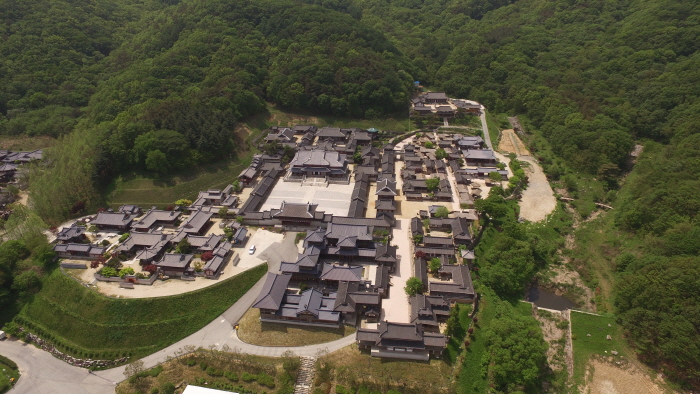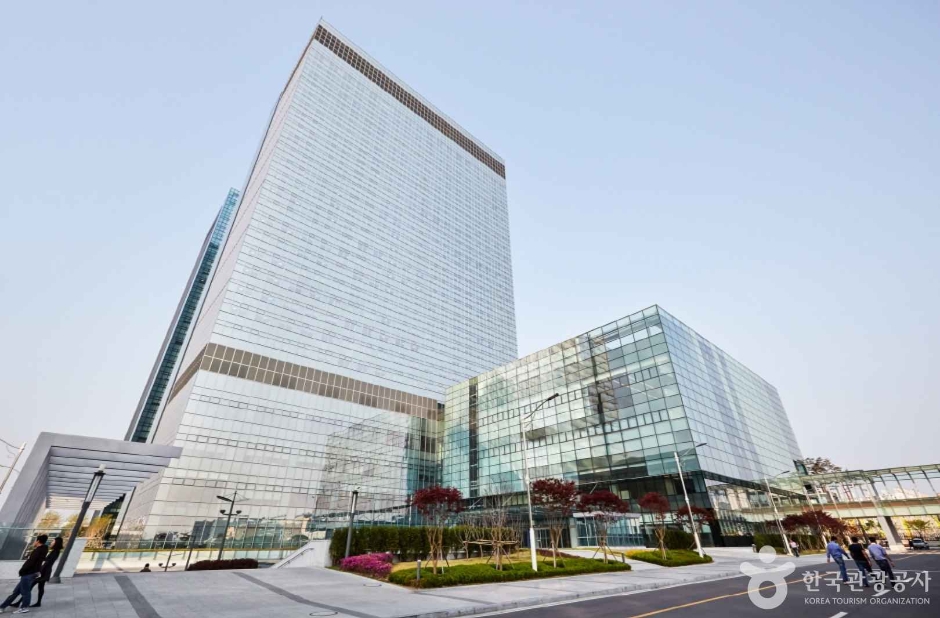Seocheon Hansan Mosi Museum (서천한산모시관)
2018-09-06
1089, Chungjeol-ro, Hansan-myeon, Seocheon-gun, Chungcheongnam-do
Mosi (Ramie Fabric) is one of Hansan’s special local products, along with sogokju liquor. Seocheon Hansan Mosi Museum explains the history and process of making mosi, as well as provides visitors with a chance to see it being made by skilled artisans. With the assistance of Bang Yeon-ok, visitors can try their hand at the process, designated Important Intangible Cultural Heritage No. 14, or try other experience programs such as natural dying and making useful items.
Samtan Art Mine (삼탄아트마인)
2022-08-31
1445-44, Hambaeksan-ro, Jeongseon-gun, Gangwon-do
82-33-591-3001
Samtan Art Mine is an art complex transformed from an abandoned mine. After being used as a coal mine for 40 years, the mine turned into an art complex in 2001. With more than 100,000 art works on exhibit as well as the harmony between the art installations and the interior, which still maintains elements of the former coal mine, the art mine creates a unique atmosphere that cannot be found elsewhere. With lots to see and the availability of many special programs, Samtan Art Mine offers an unique experience and serves as a great photo spot for tourists.
Pocheon Art Valley [Hantangang UNESCO Global Geopark] (포천아트밸리 (한탄강 유네스코 세계지질공원))
2025-06-17
234 Art valley-ro, Sinbuk-myeon, Pocheon-si, Gyeonggi-do
+82-1668-1035
The green waters of the lake and the sharply cut cliffs above make a picture-perfect landscape. This beautiful scenery, remnant of an old rock quarry, remained relatively unknown until the 1990s, with the opening of Pocheon Art Valley, an art & culture complex. An astronomical observatory opened in 2014, making Pocheon Art Valley a popular location for children's experience programs, on top of already being a popular date spot.
Dae Jang Geum Park (용인 대장금 파크)
2018-12-25
25, Yongcheon drama-gil, Baegam-myeon, Cheoin-gu, Yongin-si, Gyeonggi-do
Dae Jang Geum Park in Yongin, Gyeonggi-do is the largest historical drama set in Korea. Facilities in the themed park are semi-permanent facilities reflected the architectural style, lifestyle and culture of the past, based on historical records. The facilities are in great harmony with the surrounding natural landscapes, which makes tourists feel as if they have traveled to the past in a time machine. The park has also been used as a filming site for music videos, documentaries, and commercials.
Samsung Innovation Museum (삼성 이노베이션 뮤지엄)
2024-10-31
129 Samsung-ro, Yeongtong-gu, Suwon-si, Gyeonggi-do
Samsung Innovation Museum is an electronic industrial museum run by Samsung, a major global company based in Korea. The museum mainly consists of three sections. Visitors can learn about the history of Korea's electronic industry, as well as the past, present and future of the semiconductor, display and mobile industries, where Samsung made great achievements. The museum also runs an education facility called Children's Display Research Institute.
Medicinal Herb Tea Therapy Center (한방 티 테라피 체험장)
2018-08-01
56, Bio valley 1-ro, Jecheon-si, Chungcheongbuk-do
Relax your mind and body with a cup of tea
Tea therapy is used to relieve the symptoms of diseases or boost one's energy with teas. In the Medicinal Herb Tea Therapy Center, visitors can enjoy teas made with medicinal herbs and can experience aromatherapy by checking their physical condition with aromas. An aroma foot massage and making medicinal herb teas are recommended as well.
Wonju Hanji Theme Park (원주한지테마파크)
2022-12-21
151, Hanjigongwon-gil, Wonju-si, Gangwon-do
+82-33-734-4739
At Wonju Hanji Theme Park, visitors can learn everything about hanji (traditional Korean paper), including its origin and history, through exhibitions, education and activity programs. The museum consists of a two-story main building and an outdoor park. The building's 1st floor has the Hanji History Room, Hanji Experience Room, an art shop, and a mini library, while the 2nd floor has two exhibition halls and a conference room.
Pocheon Sansawon (포천 산사원)
2022-12-27
25, Hwadong-ro 432beon-gil, Pocheon-si, Gyeonggi-do
+82-31-531-9300
Pocheon Sansawon is a museum of traditional Korean liquor, mainly home-brewed liquor. Several rows of liquor crock pots in Sewollang, the garden in Sansawon, create a magnificent view. Old materials and books about the history of Korea's liquor culture attract visitors. After touring the museum, visitors can try non-sterilized liquor of Baesangmyeon Brewery and join activity programs for making home-brewed liquor, fruit-based liquor, seasonal liquor, and more.
Korea Aerospace Research Institute (한국항공우주연구원)
2018-09-07
169-84, Gwahak-ro, Yuseong-gu, Daejeon
Blast off your dream to space.
The Korea Aerospace Research Institute (KARI) is definitely the place to be if you are interested in space. The institute is not a simple promotion center; it is where actual research is done. KARI has led the launching of Naro, Korea's first rocket. In addition, a diverse range of events are available such as, Saturday aerospace class, aerospace camp, vision camp for college students and so on.
In the Satellite Test Building, visitors can see and listen to explanations about a satellite that is currently being researched and tested. They can tour key aerospace facilities such as the Launch Environment Lab, Orbit Environment Lab and Satellite Assembly Lab.
* With the successful launch of rocket Naro, Korea became the 11th country to join the Space Club (a group of countries that have the technologies to launch a space rocket).
The ARC Communication Space (디아크문화관)
2024-02-29
57 Gangjeongbon-gil, Dasa-eup, Dalseong-gun, Daegu
+82-53-585-0916
The ARC Communication Space features exhibition halls and art galleries on the underground floor, and Circle Theater on the first and second floors, all centered around the theme of water. The name "ARC" stands for Architecture of River Culture and Artistry of River Culture, showcasing themes such as the relationship between rivers and people, rivers and music, rivers and literature, the birth of life, and the rise of civilization.


![Pocheon Art Valley [Hantangang UNESCO Global Geopark] (포천아트밸리 (한탄강 유네스코 세계지질공원))](http://tong.visitkorea.or.kr/cms/resource/78/3331978_image2_1.jpg)



 English
English
 한국어
한국어 日本語
日本語 中文(简体)
中文(简体) Deutsch
Deutsch Français
Français Español
Español Русский
Русский